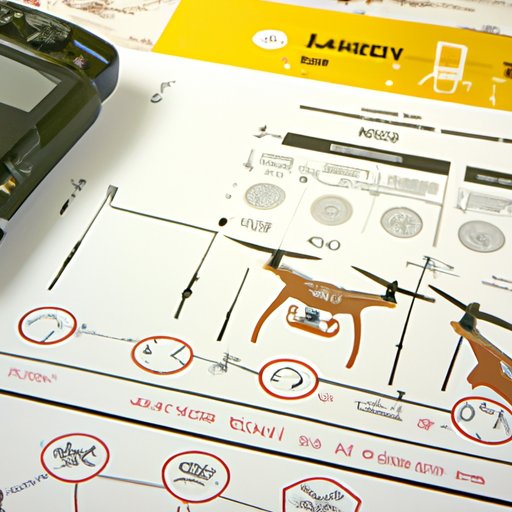Introduction
Drones have become increasingly popular in recent years, with more people using them for recreational purposes and commercial applications alike. But one of the biggest questions people have is how far can a drone travel? In this article, we will explore the maximum range of a drone and look at the different factors that affect its flight range. We’ll also provide tips for maximizing drone flight range and staying within regulatory guidelines.
How Far Can a Drone Fly?
In order to understand how far a drone can fly, it’s important to first understand the physics of drone flight. A drone is powered by propellers that are driven by electric motors. These motors consume electricity from the battery to generate thrust, which is what propels the drone forward. The amount of thrust produced depends on the size and number of propellers, as well as the power of the motor.
The speed and distance a drone can travel is determined by the amount of time it can stay in the air. This is known as “flight time”, and is usually measured in minutes. The maximum flight time of a drone is limited by the capacity of its battery and the efficiency of its motors. Generally speaking, the larger the battery, the longer the flight time, and the more powerful the motors, the faster the drone can go.
Based on these factors, it’s possible to estimate the maximum flight range of a drone. According to research conducted by the University of Southampton, the average maximum flight range of a drone is around 10 kilometers (6.2 miles). However, this figure can vary greatly depending on the type of drone and the conditions in which it is flying.

Mapping Out the Distance a Drone Can Travel
When estimating the maximum flight range of a drone, there are several factors to consider. These include the type of drone, its size, weight, and battery capacity, as well as the weather conditions and terrain. For example, a smaller drone with a lighter payload will be able to fly further than a heavier drone with a larger payload.
It’s also important to take into account any regulations that may limit the distance a drone can travel. In the United States, for example, the Federal Aviation Administration (FAA) has implemented rules limiting the distance a drone can fly from its operator. These rules vary depending on the type of airspace and other factors, so it’s important to check with the FAA before flying your drone.

The Science Behind Drone Flight Distances
When it comes to understanding the science behind drone flight distances, the most important factor to consider is battery life. The amount of energy a drone’s battery can store is directly related to its flight time. The larger the battery, the more energy it can store and the longer it can stay in the air.
The efficiency of the motors is also an important factor. More efficient motors require less energy to produce the same amount of thrust, which means they can fly for longer distances. Finally, the weight of the drone and its payload will also have an impact on its flight range, as heavier drones will require more power to stay in the air.
By taking all of these factors into account, it’s possible to calculate the maximum flight range of a drone. According to a study published in the journal Applied Physics Reviews, the maximum flight range of a typical consumer-grade drone is approximately 20 kilometers (12.4 miles). However, this figure can vary significantly depending on the type of drone and the conditions in which it is flying.
A Guide to Maximizing Drone Flight Range
If you want to maximize your drone’s flight range, there are several steps you can take. The first is to choose the right model of drone. Lighter drones with more efficient motors and larger batteries will be able to fly further than heavier models with less powerful motors and smaller batteries.
It’s also important to utilize flight planning software. This type of software can help you plan out the most efficient route for your drone, taking into account wind speeds, weather conditions, and other factors that may affect its performance. This can help you get the most out of your drone’s battery life and maximize its flight range.
Finally, it’s important to stay within regulatory guidelines. Each country and region has its own set of rules governing drone flights, and it’s important to familiarize yourself with these regulations before flying your drone. Not only will this help ensure the safety of yourself and others, but it can also help you avoid running afoul of the law.
Conclusion
In conclusion, the maximum flight range of a drone varies depending on the type of drone and the conditions in which it is flying. Most consumer-grade drones have a maximum flight range of around 20 kilometers (12.4 miles), though this figure can vary significantly. To maximize your drone’s flight range, it’s important to choose the right model, utilize flight planning software, and stay within regulatory guidelines.
(Note: Is this article not meeting your expectations? Do you have knowledge or insights to share? Unlock new opportunities and expand your reach by joining our authors team. Click Registration to join us and share your expertise with our readers.)
